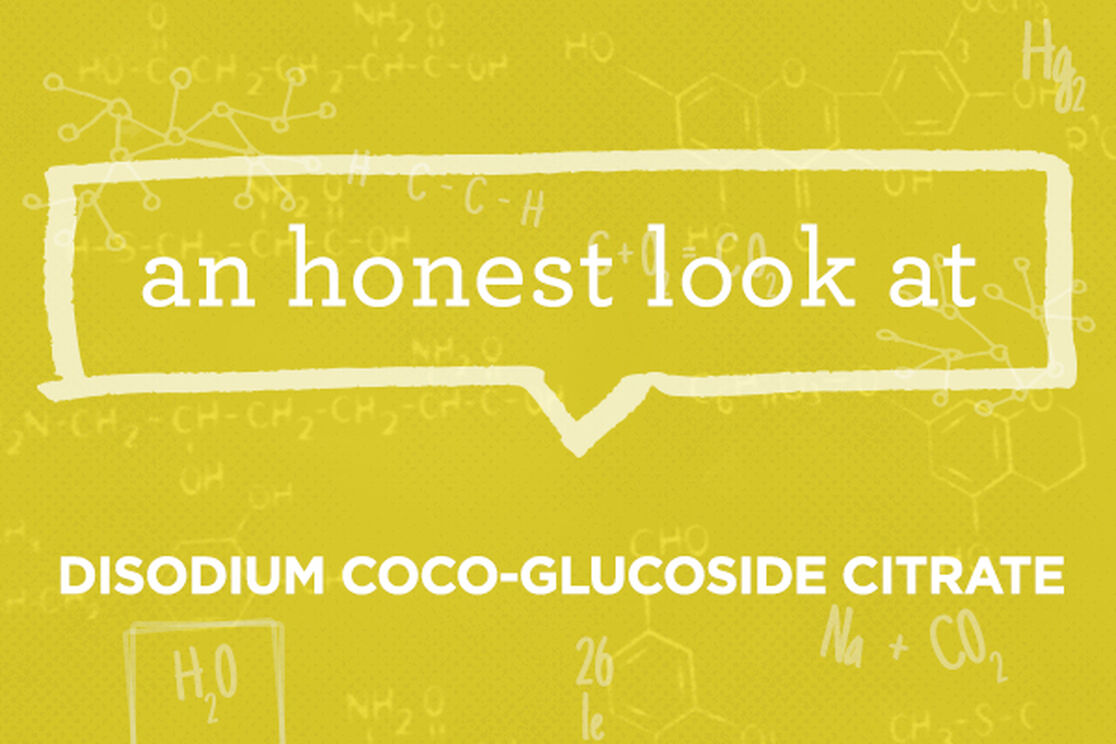This is part of our ongoing series helping consumers better understand chemicals, chemistry, and product formulations. We translate the science, bust the myths, and give you an honest assessment, so you can make informed choices for your family!
Ingredient:
Disodium Coco-Glucoside Citrate
What it is:
Disodium coco-glucoside citrate is derived from citric acid (made from fermenting sugar) and coco-glucoside (made from fatty acids found in coconuts).
What it does:
It’s a very mild, anionic surfactant (which is a compound that helps clean by reducing the surface tension of water, binding to dirt and grime to wash it away more effectively) (1,2). Not only does disodium coco-glucoside citrate gently clean, it’s also an emulsifier, which helps keep all the ingredients in a formula consistently mixed up (3).
Why we use it:
Compared to many other surfactants used in shampoos and body washes (like the commonly used sodium lauryl sulfate - SLS), disodium coco-glucoside citrate is very mild (perfect for babies or those with sensitive skin), and it’s not suspected to be potentially toxic or harmful or bad for the environment (1,4-6). It’s even a U.S. EPA Safer Choice chemical, which means it’s safer for human health and the environment (7).
What’s more, it’s Whole Foods Premium Body Care-approved – and their standards, developed by a team of scientists over the course of years, are some of the strictest available.
Why we’re featuring it today:
You’ll often hear the recommendation to avoid ingredients you can’t pronounce. It’s a great starting point for trying to understand what’s inside your products, but it certainly doesn’t mean that anything difficult to pronounce is inherently bad. Disodium coco-glucoside citrate is a great example. Know how to conquer fear of the unknown? Being curious, researching, and learning more! (At least, it works for us.)
Still, who has time to research every ingredient? That’s why it’s part of our company’s mission to provide educational resources backed by solid research (like this series about different chemicals and ingredients) to help you make informed choices. We’ll give you one less thing to worry about and you can spend that time enjoying your life and our products.
References:
- Ash, M. (2004). Handbook of green chemicals. Synapse Info Resources.
- Bathroom products - Coming out in the wash. Retrieved December 7, 2015, from http://www.cosmeticsbusiness.com/technical/article_page/bathroom_products__coming_out_in_the_wash/49792
- Common menu bar links. (2015). Retrieved December 14, 2015, from http://webprod.hc-sc.gc.ca/nhpid-bdipsn/ingredreq.do?id=15655&lang=eng
- Disodium coco-glucoside citrate Material Safety Data Sheet. (2012). Retrieved December 7, 2015, from http://www.ritacorp.com/wp-content/uploads/MSDSs/lamberti/50109.pdf
- Geier, J., Uter, W., Pirker, C., & Frosch, P. J. (2003, 12). Patch testing with the irritant sodium lauryl sulfate (SLS) is useful in interpreting weak reactions to contact allergens as allergic or irritant. Contact Dermatitis, 48(2), 99-107. doi: 10.1034/j.1600-0536.2003.480209.x
- Branco, N., Lee, I., Zhai, H., & Maibach, H. I. (2005). Long‐term repetitive sodium lauryl sulfate‐induced irritation of the skin: an in vivo study. Contact Dermatitis, 53(5), 278-284.
- Safer Chemical Ingredients List with Chemical Abstracts Service (CAS) Information. Retrieved December 7, 2015, from http://www.epa.gov/saferchoice/safer-chemical-ingredients-list-chemical-abstracts-service-cas-information
This post was revised as of 1/14/2016.
We aim to provide you with the most honest and credible information possible. This article was reviewed for accuracy by The Honest Team and was written based on sources that are linked at the bottom of the article.
blog_review_statement



